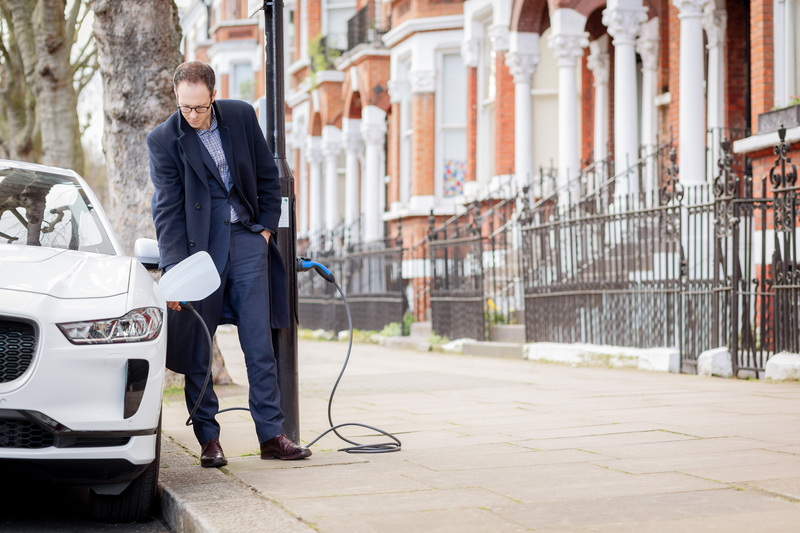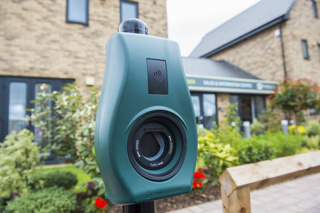This feature originally appeared in the January 2021 edition of Fleet News. Read the article in the digital issue of the magazine.
Public charge points are currently outnumbered three-to-one by home units, with 80% of all charging sessions taking place at residential addresses.
But it is the public charging network which will, arguably, have a more important role in the transition to electric vehicles (EVs).
This is, primarily, for two reasons. Around 40% of households do not have off-street parking, while the availability and reliability of public charge points is also critical to build consumer confidence.
This was highlighted in the latest Department for Transport (DfT) Transport and Technology Public Attitudes Tracker report, which cited worries around charging infrastructure as the biggest disadvantage to EVs.
“People might only have to charge their EVs once or twice a week, but they still want it to be convenient and it is still a big barrier for people in terms of thinking ‘how am I going to charge?’, ‘what am I going to do?,” says Natasha Robinson, head of Office for Zero Emission Vehicles (OZEV).
“We’ve looked to help move that market through our infrastructure schemes, but this is definitely an area we’re looking for a more accelerated timetable.”
In recognition of the need to increase the public charging network, the Government announced £1.3 billion of funding to grow it in its November spending review:
- £950 million to support the rollout of rapid EV charging hubs at every service station on England’s motorways and major A-roads.
- £275m to extend support for charge point installation at homes, workplaces and on-street locations, while reforming these schemes so they target difficult parts of the market such as leaseholders and small and medium-sized enterprises (SMEs).
- £90m to fund local EV charging infrastructure to support the roll-out of larger on-street charging schemes and rapid hubs in England.
The DfT’s latest Electric Vehicle Charging Device Statistic report found the number of public charge points had increased 18% in the past year to 19,487, with 3,530 of those being rapid devices.
The report says there is an uneven geographical distribution of charging devices within the UK, with fewer charge points in rural or remote areas.
London has the highest level of charging device provision per 100,000 of population with 63, while Northern Ireland is lowest with 17. The UK average is 29 per 100,000 people.
The locations of public charge points are split into three segments: destination, transit and on-street.
Here we look at what these segments are and some of the developments within them.
Destination

‘Destination’ charge points are found at locations where people go to for a reason other than to charge their EV, such as supermarkets, shopping centres, cinemas or restaurants.
The charge points are often installed by businesses to provide an additional benefit or incentive to customers, says John Murray, head of EVs at energy research and consultancy company Delta-EE, and the length of stay is typically 30-to-60 minutes.
“We expect this segment to continue to be led by standard-speed (22kW or less) chargers, with some rapids (22-100kW), and only a small number of high-power chargers (100kW or more),” Murray adds.
This certainly seems to be the current trend, with numerous retailers and restaurants announcing partnerships to install charge points at their sites for customer use.
One of the earliest major announcements came from a partnership of Tesco, Volkswagen and PodPoint and this will see more than 2,400 EV charging bays introduced across 600 Tesco stores by the end of this year.
The bulk of these will be 7kW chargers, while some sites will also offer 22kW and 50kW units.
Other supermarkets are following suit. In the summer, Aldi announced it was partnering with NewMotion to provide charge points at all new store locations, adding 140 chargers to the UK public charging network over the next three years.
These will support charging speeds of up to 22kW, with Fritz Walleczek, managing director of corporate responsibility at Aldi UK, saying this will ensure the retailer’s EV charging infrastructure is future-proofed to accommodate newer EV models that will have bigger battery sizes and support greater charging speeds.
Restaurant chains are another obvious location for charge points, allowing customers to top-up EVs while they eat (in a post-coronavirus world).
Marstons Inns and Taverns has, so far, had 400 50kW chargers installed at 200 of its sites by Engenie, and says these can provide customers with up to 75-100 miles of charge in 30 minutes (assuming the EV is capable of pulling that charge capacity).
Further examples of how restaurants are embracing the technology came last summer when McDonald’s and KFC both announced partnerships with InstaVolt.
McDonald’s will introduce 125kW charging points at both new and existing Drive Thru restaurants within the McDonald’s estate where they can be accommodated.
Its first charge point went live at its restaurant in Port Talbot, Wales, last month (December) as the first step in the business’s ambition to have more EV charging points than any other company in the UK and Ireland.
“With more than 1,300 restaurants, our ambition would mean you would never be far from a charging point,” says Paul Pomroy, CEO of McDonald’s UK and Ireland.
“Drivers will be able to pop in for a coffee or a meal and get an 80% charge in 20 minutes. We are known for speed and convenience, and this partnership with InstaVolt will provide just that for EV drivers.”
InstaVolt’s deal with KFC will see rapid chargers installed at up to 450 KFC drive-through restaurants. It already has chargers at KFCs in Sheffield, Nottingham, Rotherham and Crewe.
Transit

The ‘transit’ segment refers to charge points at locations where the primary reason for the visit is to charge an EV, similar to the current petrol and diesel forecourt model.
At the moment, these account for less than 1% of the UK’s charge points and this proportion is likely to be similar in 2030, says Murray.
However, the proportion of the actual electricity they will charge EVs with will be around 20% of the UK’s total in 2030 due to their higher power than other charge points and increased utilisation.
“We expect a greater reliance on transit charging, similar to the forecourt model we see today for refuelling ICE (internal combustion engine) vehicles,” says Murray.
The Government has been looking at this sector in “quite a lot of detail over the past 12-to-18 months”, says OZEV’s Robinson.
“By 2035, we expect to see around 6,000 high-powered charge points across the motorway and A-road network,” she adds. “We’re working hard with others, such as Highways England, Ofgem, the DNOs (distribution network operators) and National Grid, to make sure we’re getting our motorway network ready for mass uptake.
“We want to ensure there is a good experience for the drivers and also, critically, for fleets, which have slightly different needs and requirements of the charging infrastructure network.”
As well as drivers who do long journeys, transit charging will appeal to those who either do not have access to a home charger or on-street charging, or just want the convenience of a fast top-up.
An example of a transit charging facility is BP’s Hammersmith Flyover site, which features four 150kW chargers and one 50kW unit.
“We believe Hammersmith Flyover is the most-visited public charging destination in the UK, recently charging an average of 115 vehicles each day with more than 2,000kWh of energy,” says Matteo de Renzi, CEO of BP Pulse.
“Ultra-fast is the new frontier of public charging, with even the latest generation of small electric cars offering 100kW charging speeds, and it is as important to private motorists without off-street parking as it is to drivers with higher mileage needs.”
Like BP, Shell is one of the fuel suppliers also installing charge points on existing forecourts.
It plans to have a combination of 200 50kW and 150kW chargers on forecourts located on major routes across the UK, in addition to a network of chargers available on local roads.
A new entrant in this sector is Gridserve, which plans to build 100 Electric Forecourts in the UK in the next five years as part of a £1bn programme.
It opened its first one in Braintree last month and this enables 36 vehicles to be charged at the same time at speeds up to 350kW.
Electricity is generated from both solar power canopies above the chargers and a network of hybrid solar farms, also operated by Gridserve.
The Electric Forecourt blurs the line between transit and destination segments, as it includes a retail space hosting partners including WH Smith Travel, Costa Coffee, Booths and the Post Office. It also has a waiting lounge, washrooms, dedicated children’s area and business meeting rooms.
On-street

As the term suggests, ‘on-street’ charge points are found on roads or near homes, typically for the estimated 40% to 50% of UK households that do not have access to off-street car parking.
“We’ve got to support this area with our on-street residential scheme,” says Robinson. “This provides funding for local authorities to put in 7kW to 22kW charge points in locations that people can access so it unlocks the option of having an EV.”
The deployment of on-street charge points faces a number of difficulties, including costs for providers to install as well as practical constraints in space and capacity to meet likely demand.
“There are already concerns about the impact of existing chargers to the streetscape: they’re large, can be loud and often unsightly,” says Chris Pateman-Jones, CEO of Connected Kerb.
“Instead of constructing another mammoth-sized thing to plonk on the footpath and inconvenience all parents with prams out for an evening stroll, how about utilising posts and bollards that have been inconveniencing people for years which they have already learned to live with?”
Connected Kerb develops charge points which can be attached to signposts or other existing street furniture.
Some companies are developing solutions which will allow lampposts to be used to charge EVs.
Chargy, for example, became the first company to install lamppost charge points in London in 2018 in a deal with Southwark Council, while last year Siemens and Ubitricity began installing them in Richmond-upon-Thames.
“The standard lamppost is connected to a 25-amp supply,” says Richard Stobart, CEO of Chargy. “If it has gone across to LED lighting, that leaves 24 amps for charging cars.
“You will be able to get around 20 miles of driving for every hour of lamppost charging.”
In March last year, Westminster City Council teamed up with Siemens and Ubitricity to unveil the UK’s first converted lamppost charging street: Sutherland Avenue, Maida Vale, W9, which the local authority has dubbed ‘Electric Avenue, W9’.
Residents can charge their EVs at 24 lampposts at various locations along the street.
“While we cannot solve the challenge of air quality overnight, Electric Avenue W9 is an important showcase of what’s possible using existing city infrastructure,” says Cedrik Neike, CEO of Siemens Smart Infrastructure. “It illustrates how residential streets will look in the near future and accelerates the shift to zero emission vehicles.”
Another potential on-street charging solution is the app-operated pop-up charger, which sits flush to the pavement when not in use, extending only when it is needed.
Oxford became the first city in the world to trial this technology after its city council and charge point developer Urban Electric were awarded £474,000 funding through Innovate UK.
The trial ran from September 2019 to the end of February 2020 and was a success, says the council.
“Resident satisfaction and utilisation was very high and all project partners learned a great deal about the possibilities of the technology,” it adds.
The technology is being deployed in Dundee as part of a £3.8m trial, jointly funded by OLEZ (Office for Low Emission Vehicles) and Innovate UK.
“I think is a really exciting development and I think it will increase the resident charging across many cities in the UK,” says Fraser Crichton, fleet manager for Dundee City Council.
























Login to comment
Comments
No comments have been made yet.